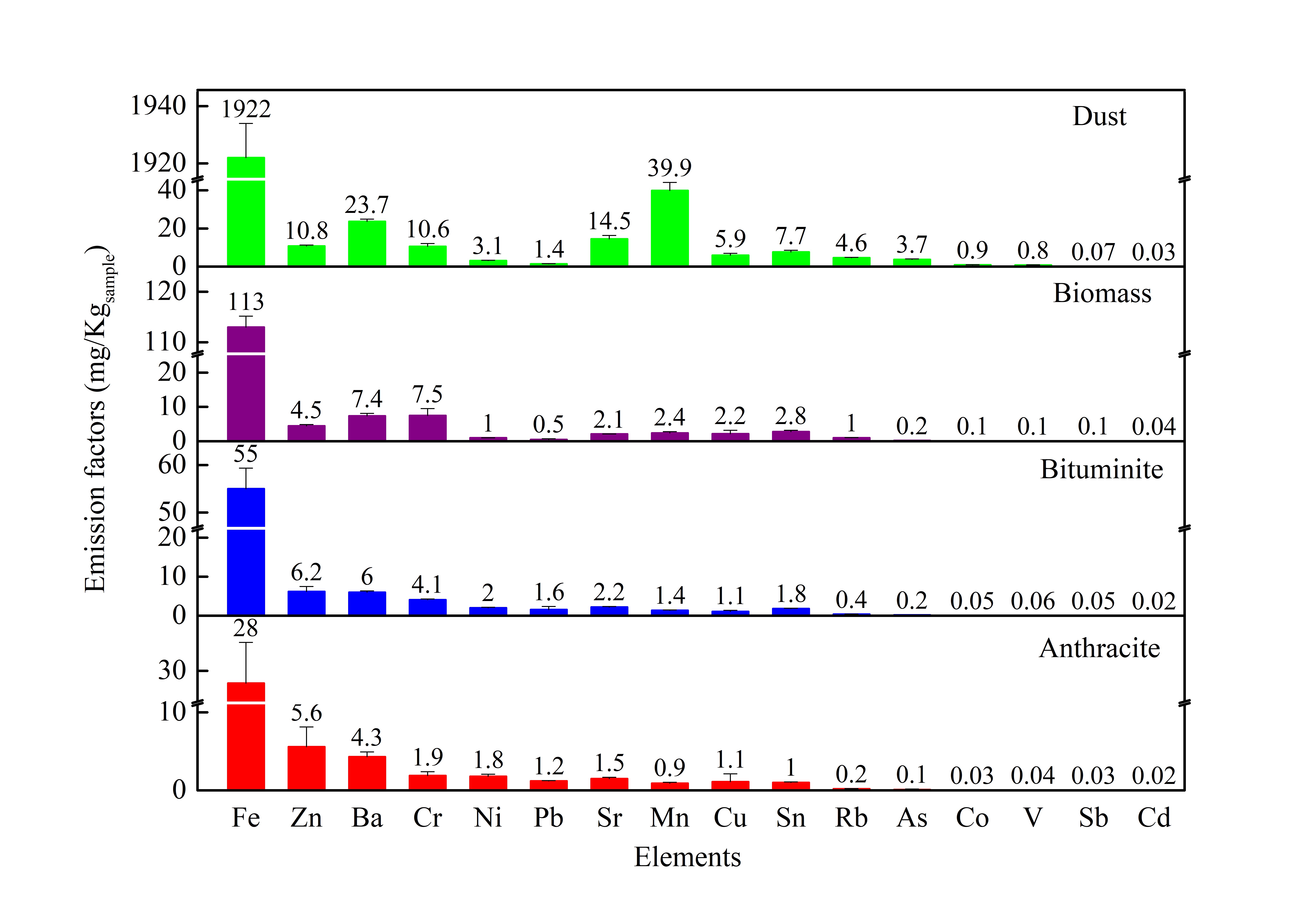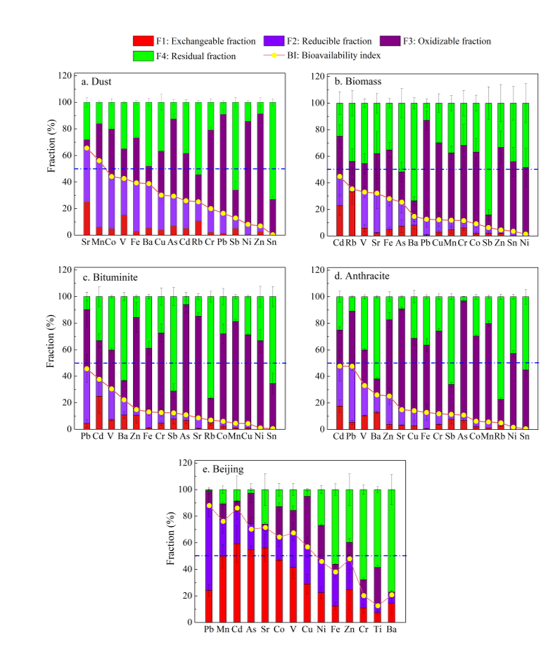Huang, R.J.*, Yuan, W., Wang, T., Cao, W., Wang, Y., Lin, C., Yang, L., Guo, J., Ni, H., Wu, F.: Chemical signature and fractionation of trace elements in fine particles from anthropogenic and natural sources, J. Environ. Sci., 114, 365-375, 2022.
The health effects of trace metal elements in atmospheric fine particulate matter (PM2.5) are widely recognized, however, the emission factor profiles and chemical fractionation of metal elements in different sources were poorly understand.
A research group led by Prof. HUANG Rujin from the Institute of Earth Environment (IEE) of the Chinese Academy of Sciences studied sixteen metal elements, including Cd, Pb, V, Zn, Ba, Sb, As, Fe, Sr, Cr, Rb, Co, Mn, Cu, Ni and Sn from biomass burning, bituminite and anthracite combustion, as well as dust. The results show different emission sources were associated with distinct emission profiles, holding important implications for source apportionment of ambient particulate metals.
Specifically, Fe was the dominant metal species (28-1922 mg/kg) for all samples, and was followed by different metals for different samples. For dust, Mn (39.9 mg/kgdust) had the second-highest emission factor, while for biomass burning, it was Cr and Ba (7.5 and 7.4 mg/kgbiomass, respectively). For bituminous coal combustion, the emission factor of Zn and Ba was 6.2 and 6.0 mg/kgbituminous, respectively, while for anthracite combustion the corresponding emission factor was 5.6 and 4.3 mg/kganthracite, respectively.
Moreover, chemical fractionation (i.e., the exchangeable, reducible fraction, oxidizable, and residual fraction) and the bioavailability index (BI) values of the metal elements from different sources were further investigated to reveal the link between different emission sources and the potential health risk.
This study, published in Journal of Environmental Sciences, hold important implications for source apportionment and source-specific particulate metal-associated health effects.

Fig.1 Emission factor profiles of measured 16 elements in PM2.5 from dust, biomass burning, bituminite coal and anthracite combustion.

Fig.2 Chemical fraction and bioavailability index of measured metal elements in (a) dust, (b) biomass burning emissions, (c) bituminite coal combustion emissions, (d) anthracite combustion emissions, and (e) ambient PM2.5 in Beijing.

